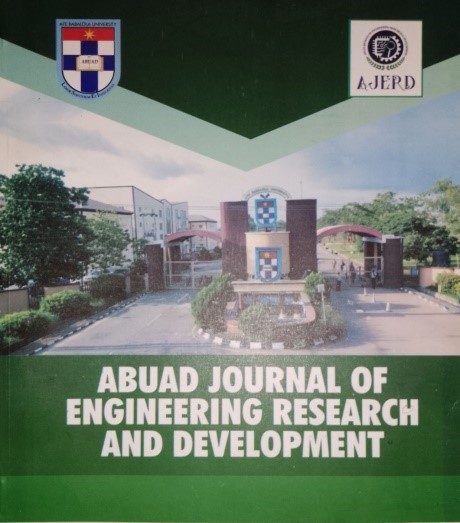Machine Learning-Based Multimodal Biometric Authentication System (Facial and Fingerprint Recognition) for Online Voting Systems
Main Article Content
Abstract
Online voting systems offer many advantages over traditional voting methods, such as paper ballots, this is because paper ballots face some well-known challenges, ranging from logistics, susceptibility to tampering, and the requirement for voters to be physically present at polling stations. In contrast, online voting systems offer the potential to overcome these challenges by providing a convenient and accessible means for citizens to cast their votes from anywhere. However, online voting systems must address significant security and authentication challenges to ensure that each vote is cast by a legitimate and unique voter, maintaining the integrity of the electoral process. This project proposes the development of a machine learning authentication module that can be integrated into an online voting system using facial recognition and fingerprint recognition to enhance the security of online voting. The system therefore consists of two main components; the machine learning-based authentication component and the web-based voting platform. The authentication component uses machine learning algorithms to accurately and reliably verify the identities of voters based on their biometric data. The web-based platform facilitates voter registration, authentication, and voting processes, ensuring a seamless and secure user experience. These two components were implemented first by obtaining a comprehensive database of user biometric data, training the machine learning module, and implementing a user-friendly web interface using Java Server Pages (JSP) and a MySQL database. The system's performance was evaluated using established metrics, including accuracy, precision, recall, and R2 Score with the following values 98%, 1.0, 0.8 and 0.78 respectively.
Downloads
Article Details

This work is licensed under a Creative Commons Attribution-NonCommercial-ShareAlike 4.0 International License.
References
Okonta, D., 2019. Exploring the Secure Online-Voting Strategies Information Assurance Specialists Need to Increase the Millennial Generation Voting Turnouts in a General Election (Doctoral dissertation, Colorado Technical University).
Dargan, S. & Kumar, M., 2020. A comprehensive survey on the biometric recognition systems based on physiological and behavioral modalities. Expert Systems with Applications, 143, 113114.
Katawazy, A. (2023). Identifying Challenges and Advantages of Internet Voting and Assessing the Impact on Voters Turnout in Municipal Elections.
Grimaila, M. R., & Pfleeger, S. L. (2005). Security of electronic voting systems: Design requirements and security issues. IEEE Security & Privacy, 3(5), 26-33.
Cetinkaya, O., Bicakci, K., & Savas, E. (2020). Security analysis of internet voting systems: A case study. Computers & Security, 94, 101873.
Shaikh, T., Ranadhir, H., Gugale, S., Patil, V., & Kulkarni, O. (2022). Biometrics Based Secured Online Voting System Using Machine Learning Method. EasyChair.
Singh, S. P., & Tiwari, S. (2023). A Dual Multimodal Biometric Authentication System Based on WOA-ANN and SSA-DBN Techniques. Sci, 5(1), 10.
Srivastava, R., Tomar, R., Sharma, A., Dhiman, G., Chilamkurti, N., & Kim, B. G. (2021). Real-Time Multimodal Biometric Authentication of Human Using Face Feature Analysis. Computers, Materials & Continua, 69(1).
Zhang, X., Cheng, D., Jia, P., Dai, Y., & Xu, X. (2020). An efficient android-based multimodal biometric authentication system with face and voice. IEEE Access, 8, 102757-102772.
Acheme, I. D., Nwankwo, W., Olayinka, A. S., Makinde, A. S., & Nwankwo, C. P. (2023). Petroleum Drilling Monitoring and Optimization: Ranking the Rate of Penetration Using Machine Learning Algorithms. In The International Conference on Artificial Intelligence and Logistics Engineering (152-164). Cham: Springer Nature Switzerland.
Acheme, I. D., & Vincent, O. R. (2021). Machine-learning models for predicting survivability in COVID-19 patients. In Data Science for COVID-19, Academic Press, (317-336).
Acheme, I. D., & Enoyoze, E. (2024). Customer personality analysis and clustering for targeted marketing. International Journal of Science and Research Archive, 2024, 12(01), 3048–3057 https://doi.org/10.30574/ijsra.2024.12.1.1003.
Jain, A. K., Ross, A., & Prabhakar, S. (2004). An introduction to biometric recognition. IEEE Transactions on Circuits and Systems for Video Technology, 14(1), 4-20.
Ross, A., & Jain, A. K. (2011). Multimodal biometrics: An overview. In Multimodal biometrics, Springer, New York, NY (pp. 3-22).
Hermawan, D. R., Fatihah, M. F. G., Kurniawati, L., & Helen, A. (2021, October). Comparative study of J48 decision tree classification algorithm, random tree, and random forest on in-vehicle CouponRecommendation data. In 2021 International conference on artificial intelligence and big data analytics, IEEE, 1-6.
Khan, Z., Gul, A., Perperoglou, A., Miftahuddin, M., Mahmoud, O., Adler, W. and Lausen, B., 2020. Ensemble of optimal trees, random forest and random projection ensemble classification. Advances in Data Analysis and Classification, 14, 97-116.
GeeksforGeeks (2024) Image of random forest ML algorithm Available at: https://www.geeksforgeeks.org (Accessed: 23 October 2024).




